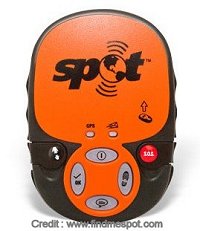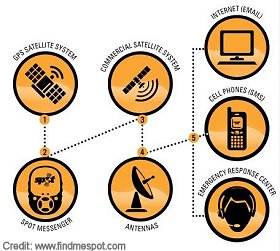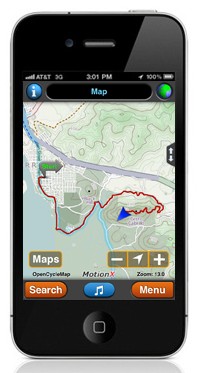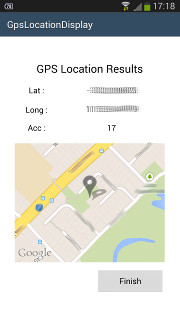|
My Location PageThis page shows the last 5 locations transmitted by my smartphone application or satellite locator. You can also see the last reported position (full page). I used a SPOT Messenger for about 7 years. The SPOT device is a small device that gets your GPS position and on command sends a message with your current position to the findmenow.com using a commercial satellite network (GlobalStar). The system then sends preconfigured messages to up to 10 email and mobile phones (via SMS).   Subscription was $115USD per annum for the service but has gone up to $175USD over the last couple of years. Add exchange rate and GST you end up paying $352AUD which is quite pricey. For that you get unlimited emails and 200 SMS messages. For Australian users, the mobile phone number must have the the leading zero dropped and 61 added to the front (country code). For example 0412345678 becomes 61412345678. Pros and Cons Compared to EPIRBOf course, the traditional method of alerting people when you need help in remote areas is by using an EPIRB (Emergency Position Indicating Radio Beacon). EPIRBs use a dedicated emergency satellite system to give reliable transmission. Many EPIRBs send GPS position to give your exact co-ordinates. The SPOT GPS messenger is a viable alternative once you consider the pros and cons. Pros of SPOT GPS Messenger
Cons of SPOT GPS Messenger
If you are interested in the satellite network, you can get more information and view live tracks of Globalstar satellites at www.n2yo.com. There's a bit more of a story on my blog page. MOTIONX When I had an iPhone I used the MOTIONX application to send position reports. When I had an iPhone I used the MOTIONX application to send position reports.The MOTIONX application for iPhone is very good. It gives fast position lockon and plenty of navigation facilities. The email position reporting/sharing is similar to SPOT (no SMS) but is free. Of course you need to be in a mobile data coverage area for the facility to work. MOTIONX uses downloaded image based maps so they are not routable. But you get a choice of MOTIONX maps or Google maps and satellite images. Since the maps are downloaded as you view them you need to be careful of data charges. ANDROID - Tasker AppThese days I'm using an Android phone (Samsung S3 LTE) and I couldn't find an app similar to MotionX. So I wrote my own using the scripting tool "Tasker". It gets the GPS position and sends a simple email that is parsed by my server. Maybe one day I'll write something that emulates the SPOT. 
|
|
Created by Greg Smith -
Hosted on vps2.smithonline.id.au (Amazon Lightsail) on Centos -
Server by Apache -
CMS by CMSimple.dk -
Template by
Websitetemplate.org
![]()